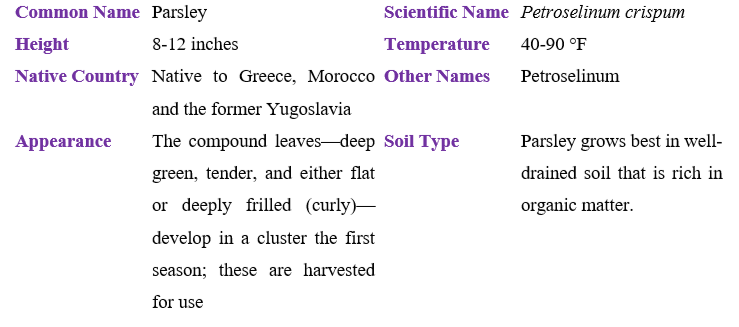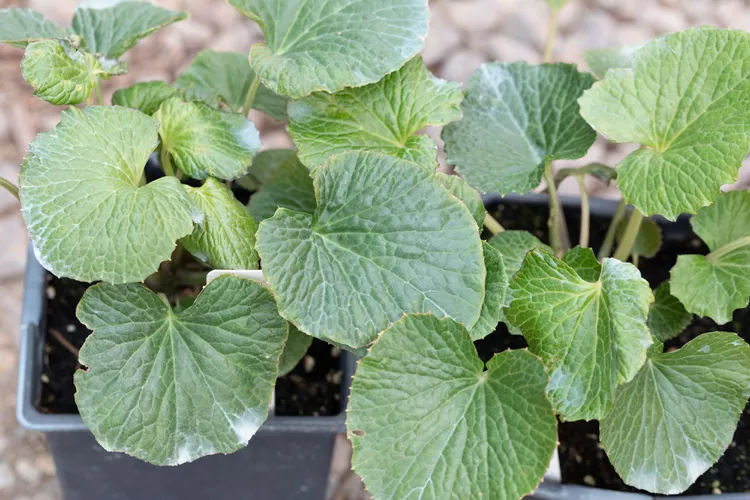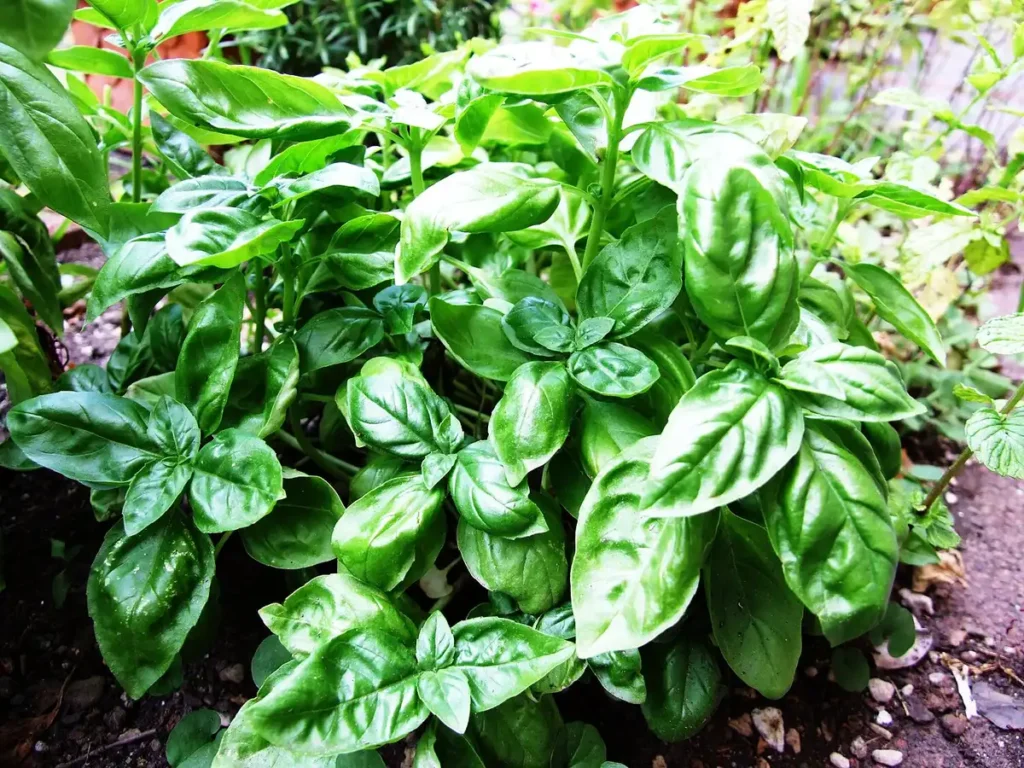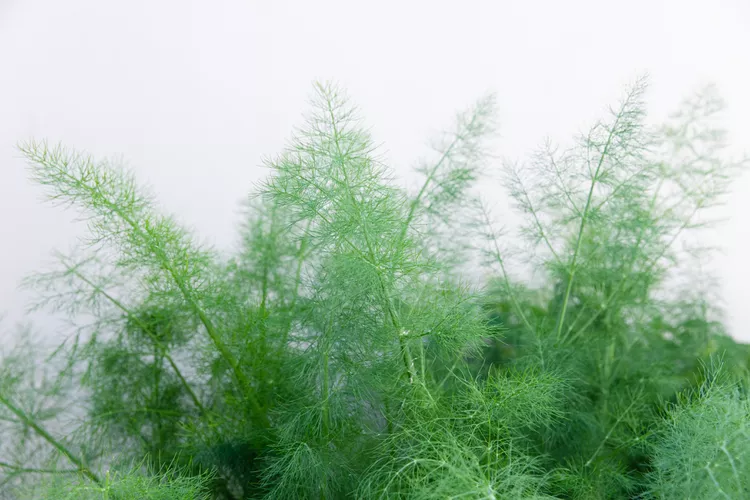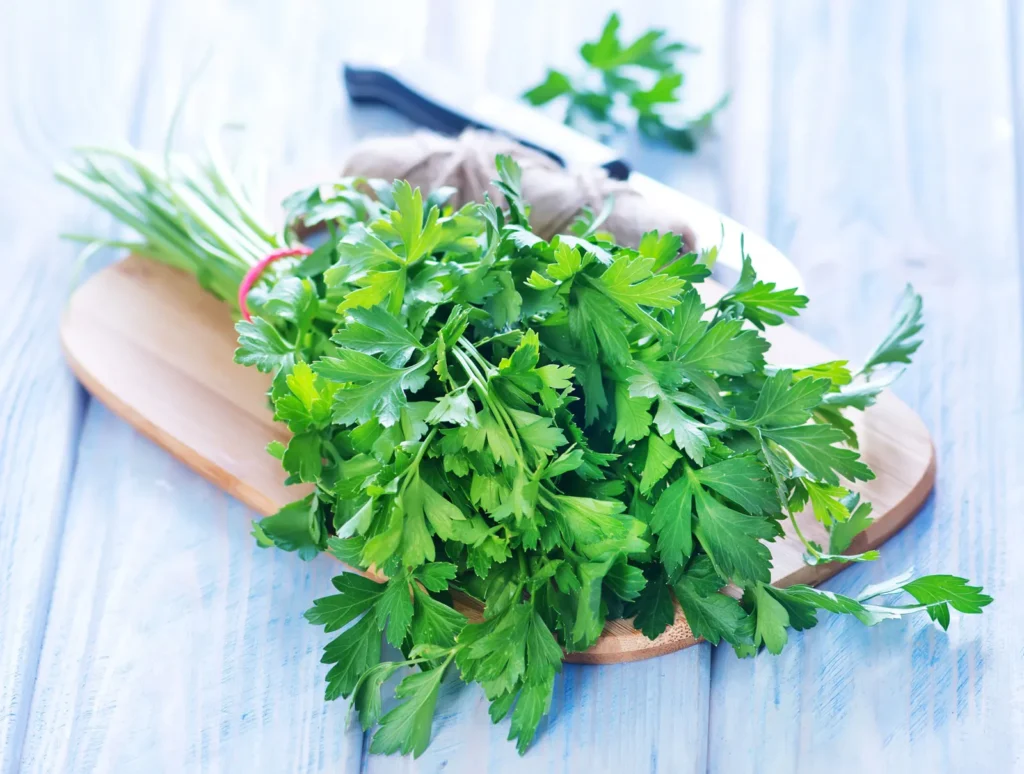
Description
In temperate regions, garden parsley is a bright green biennial plant; in subtropical and tropical regions, it is an annual herb.
When growing as a biennial, it creates a rosette of tripinnate leaves in the first year, which are 10–25 cm long and have many 1–3 cm leaflets. The taproot is used as a food reserve for the winter. It develops a flowering stem up to 75 cm (30 in) tall in the second year, with sparser leaves and flat-topped umbels that range in diameter from 3 to 10 cm and many 2 mm diameter yellow to yellowish-green flowers.
The seeds have a noticeable style remnant at the tip and are oval in shape and 2-4 mm long. Apiole is one of the components of the essential oil. Normally, when the seed matures, the plant dies.
Habitat
Greece, Morocco, and the former Yugoslavia are the native habitats of parsley, often known as garden parsley (Petroselinum crispum), a species of flowering plant in the Apiaceae family. It is commonly grown as a vegetable and herb after being imported and naturalized in Europe and other regions of the world with suitable conditions.
Uses
Parsley can be used as a garnish and gives a vibrant flavor to pesto, salsas, and sauces. It is possible to manufacture medicine from the leaf, seed, and root. Parsley is used by some people to treat gastrointestinal (GI) diseases, skin conditions, kidney stones (nephrolithiasis), bladder infections (UTIs), constipation, and numerous other medical conditions.
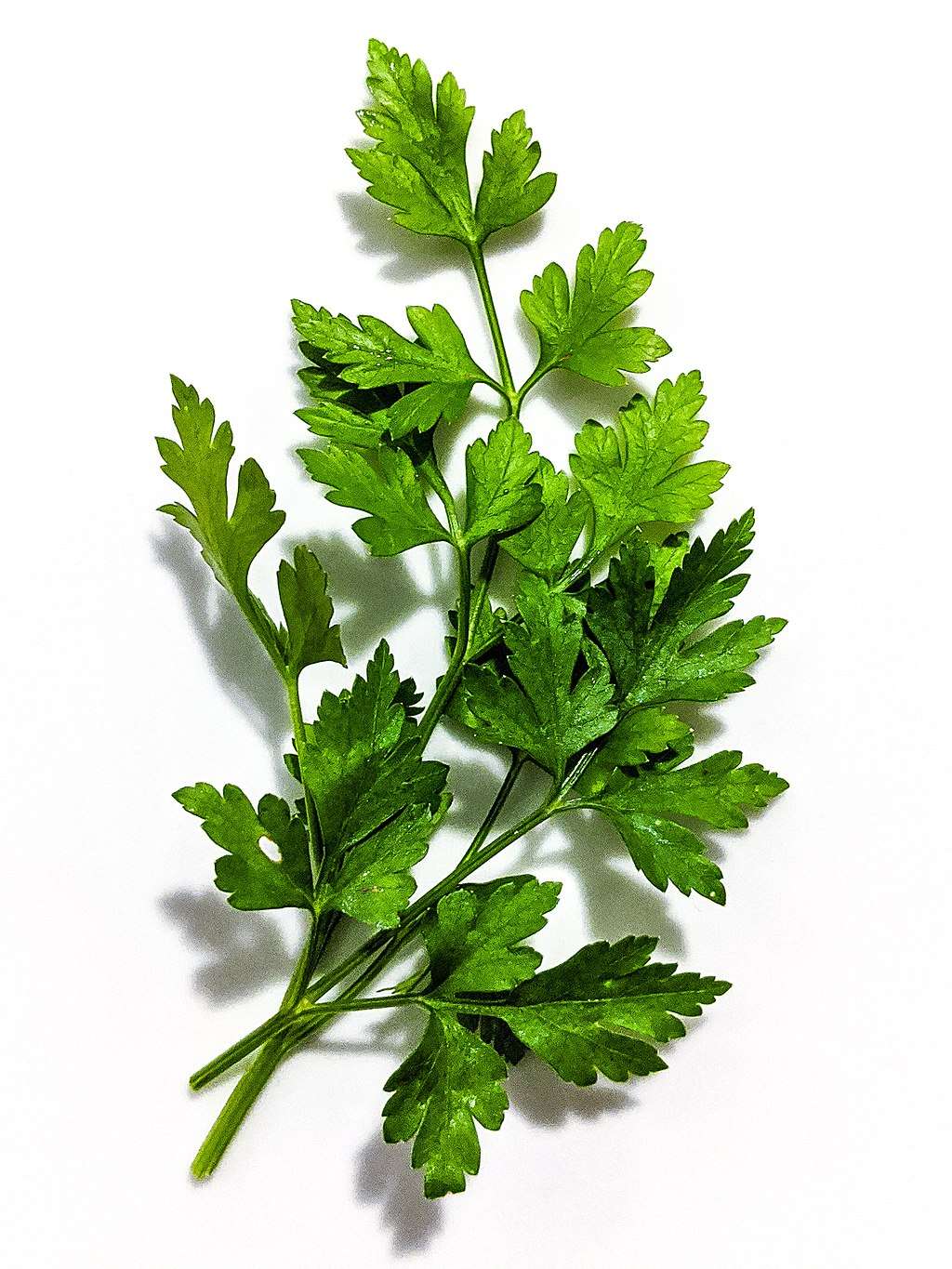
Plant Care
- Light
The greatest places for parsley to thrive are those with full sun and lots of light during the day. Parsley can also be grown in partial shade, albeit their color may not be as brilliant. In warmer climates, afternoon shadow is preferable for the plants.
- Soil and Water
The seeds of parsley don’t grow immediately. Maintain a slightly damp but not soggy soil to promote increased germination. For optimal growth, parsley need one to two inches of rain or more water each week as it reaches full height.
Although parsley isn’t particular about soil, make sure your soil drains well and add lots of organic matter, like compost, before planting for optimal growth.
- Temperature and Humidity
Parsley can tolerate a wide range of temperatures because it is hardy in most climates. But 50° to 70°F is the ideal temperature range for it to thrive in. In colder climates, mulch outside plants to protect parsley.
- Fertilizer
One or two times a season, fertilize parsley planted in the ground outdoors using a commercial 5-10-5 fertilizer. Every six weeks, fertilize indoor parsley plants grown in containers. Apply a half-strength liquid vegetable fertilizer.
Table
